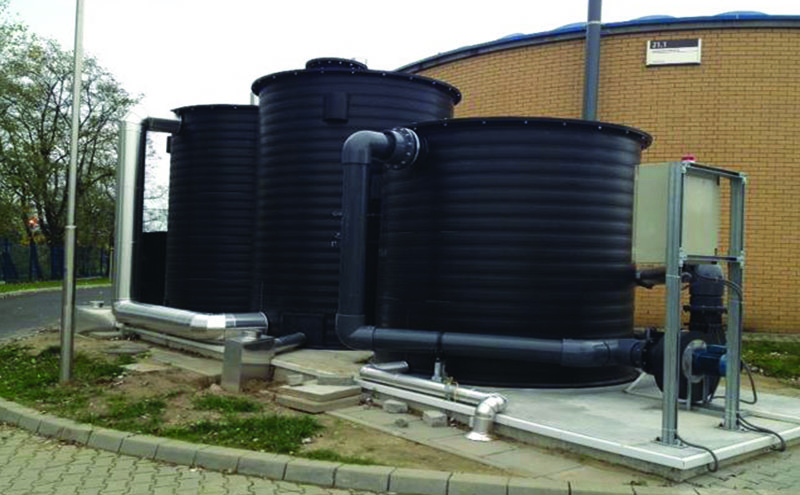
A case study article looking at the odour abatement solution developed for a sewage treatment works in Poland
Poznan is Poland’s fourth largest city with a population of over 500,000 (over 1.1 million when the surrounding metropolitan area is included).
LOS sewage treatment works on the west side of the city is owned and operated by Aquanet SA which is the second largest water utility in Poland.
The works have been redeveloped and updated over the last 8 years and serve a population equivalent to Cardiff in South Wales.
The newly developed sludge thickener tanks and processing area was found to be generating extremely high levels of odour including up to 900ppm of hydrogen sulphide. The thickening tanks were being ventilated and odour controlled by a German-designed and -installed biofiltration unit. This was clearly not coping as levels of hydrogen sulphide from the exhaust of the system were over 600ppm, with clouds of the toxic gas drifting across the main dual carriageway running adjacent to the works and creating a health hazard to drivers.
Aquanet was charged with the task of finding a more robust solution to the problem. Air-Water Treatments Ltd had seemingly already solved a major odour problem for MPWiK in Wroclaw some years earlier that had made the national TV news and so were invited to provide proposals and designs. Aquanet’s design brief to the company was to treat an 1100m³/hr gas flow containing an average of 450ppm hydrogen sulphide with peaks up to 900ppm. It also contained 5-10ppm concentrations of mercaptans and total odour concentrations of over 3,000,000 oUe/m³.
They required a maximum odour concentration of 1000 oUe/m³ at the stack outlet to achieve the desired boundary condition. This amounted to over 99.9% total odour removal, in a harsh climate that can see 30C in the summer and -25C in the winter.
Air-Water Treatment Ltd proposed a two-stage system comprising AWT Biomod™ Biotrickling Filtration followed by an AWT Peacemaker™ Dry Chemical Scrubber. The AWT Biomod™ biotrickling biofilters system uses specifically graded and treated AWT Biorock™ media for optimum biomass growth and performance. It is sold with a minimum 20-year operating life.
The AWT Peacemaker™ Dry Chemical Scrubber is said to provide sustained odour polishing by removing a very wide range of volatile organic compounds to ensure the systems outlet performance remains well below 1000oUe/m³. Peacemaker™ dry scrubbers, unlike activated carbon filters are unaffected by high relative humidity to ensure long operating life and performance.
This type of design was already well proven at several sites within the UK and a technical team from Aquanet made several visits to the UK sites for verification purposes.
The system was designed installed and commissioned by LOS in Poznan, and has been very strictly monitored by Aquanet’s technicians ever since. Their sampling and measurement regime has included strict performance testing by the University of Szczecin, a leading odour research group in Poland.
Results have shown that odour outlet concentrations are well below the desired 1000 oUe/m³ averaging less than 200oUe/m³. The results obtained with the system were presented at a major European environmental conference in Vienna by the University of Szczecin.







